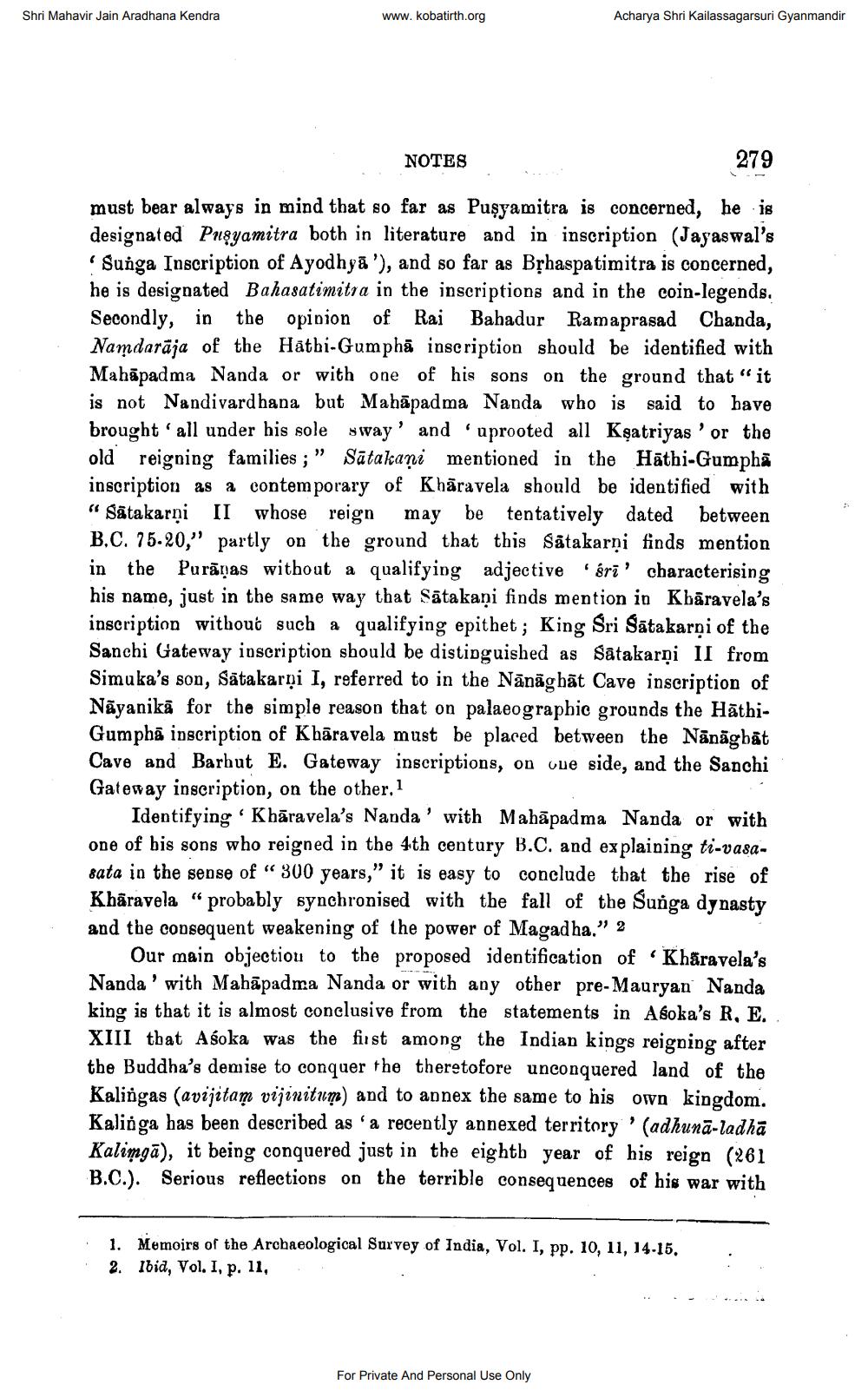________________
Shri Mahavir Jain Aradhana Kendra
www.kobatirth.org
Acharya Shri Kailassagarsuri Gyanmandir
NOTES
279
must bear always in mind that so far as Puşyamitra is concerned, he is designated Pusyamitra both in literature and in inscription (Jayaswal's
Sunga Inscription of Ayodhyā '), and so far as Bșhaspatimitra is concerned, he is designated Bahasatimitra in the inscriptions and in the coin-legends. Secondly, in the opinion of Rai Bahadur Ramaprasad Chanda, Namdarāja of the Hathi-Gumphā inscription should be identified with Mahāpadma Nanda or with one of his sons on the ground that "it is not Nandivardhana but Mahāpadma Nanda who is said to have brought all under his sole sway' and uprooted all Kşatriyas or the old reigning families ; " Sātakani mentioned in the Hāthi-Gumpha inscription as a contemporary of Khāravela should be identified with “ Sätakarni II whose reign may be tentatively dated between B.C. 75.20," partly on the ground that this Satakarņi finds mention in the Purānas without a qualifying adjective sri' characterising his name, just in the same way that Sātakani finds mention in Kbāravela's inscription withouc such a qualifying epithet; King Sri Sātakarņi of the Sanchi Gateway inscription should be distinguished as Satakarni II from Simuka's son, Sātakarņi I, referred to in the Nānāghāt Cave inscription of Nāyanikā for the simple reason that on palaeographic grounds the HāthiGumpha inscription of Khāra vela must be placed between the Nānāgbât Cave and Barbut E. Gateway inscriptions, on one side, and the Sanchi Gateway inscription, on the other. 1
Identifying Khāravela's Nanda' with Mahāpadma Nanda or with one of his sons who reigned in the 4th century B.C. and explaining ti-vasasata in the sense of “300 years," it is easy to conclude that the rise of Khāravela “probably synchronised with the fall of the Sunga dynasty and the consequent weakening of the power of Magadha." 2
Our main objectiou to the proposed identification of Kharavela's Nanda' with Mahāpadma Nanda or with any other pre-Mauryan Nanda king is that it is almost conclusive from the statements in Asoka's R, E. XIII that Asoka was the first among the Indian kings reigning after the Buddha's demise to conquer the theretofore unconquered land of the Kalingas (avijitam vijinitum) and to annex the same to his own kingdom. Kalinga has been described as 'a recently annexed territory' (adhuna-ladha Kalimgā), it being conquered just in the eighth year of his reign (261 B.C.). Serious reflections on the terrible consequences of his war with
1. Memoirs of the Archaeological Survey of India, Vol. I, pp. 10, 11, 14-15. 2. Ibid, Vol. I, p. 11,
For Private And Personal Use Only




